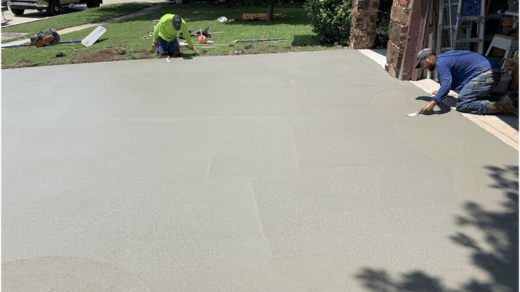Embarking on a driveway project can be a substantial undertaking that requires careful planning and execution. By adopting an organized approach, you can streamline the process and ensure the successful installation of a durable concrete driveway. This guide outlines the essential steps for effective planning, incorporating the role of concrete pumping services and key considerations for concrete driveways.
Step 1: Define Your Project Goals
Before diving into the logistics of your driveway project, it’s crucial to outline your goals. Consider the following:
- Purpose: Determine how you will use the driveway. Will it accommodate multiple vehicles, or is it primarily for aesthetic purposes?
- Design: Decide on the style and layout that best complements your property. Consider factors like width, length, and any additional features, such as borders or decorative elements.
Clearly defining your objectives will provide a roadmap for the remainder of your planning process.
Step 2: Assess Site Conditions
Next, evaluate the existing site conditions. This assessment will influence both the design and the materials you choose for your concrete driveway.
- Topography: Analyze the slope and elevation of your property. A steep incline may require additional grading or drainage solutions.
- Soil Quality: Conduct a soil test to understand its composition and stability. Poor soil conditions may necessitate the use of concrete pumping services for proper installation.
- Existing Structures: Identify any obstacles such as trees, utility lines, or existing pavement that may affect your project.
Understanding your site conditions will help you make informed decisions about design and materials.
Step 3: Budgeting and Cost Estimation
Establishing a budget is a critical step in planning your driveway project. Consider the following components when estimating costs:
- Materials: Research the price of concrete, reinforcements, and any decorative options you may wish to include.
- Labor: If you plan to hire professionals, obtain quotes from contractors experienced in concrete driveways.
- Additional Services: Don’t forget to factor in costs associated with concrete pumping services, particularly if your site is challenging to access or requires specialized equipment for efficient pouring.
Creating a comprehensive budget will help you avoid unexpected expenses as the project progresses.
Step 4: Obtain Necessary Permits
Before starting construction, check with local authorities to determine if you need any permits for your driveway project. Requirements can vary based on location and scope, so ensure you comply with local regulations. This may involve:
- Zoning Regulations: Ensure your driveway meets zoning requirements regarding width and proximity to property lines.
- Environmental Considerations: If your project could impact local ecosystems, you may need to conduct an environmental assessment.
Acquiring the necessary permits will prevent potential legal issues and project delays.
Step 5: Plan for Concrete Pumping Services
If your driveway design involves extensive excavation or is located in a hard-to-reach area, incorporating concrete pumping services into your plan is essential. These services provide several advantages:
- Efficiency: Concrete pumping allows for quick and precise pouring, reducing labor time and minimizing the potential for errors.
- Accessibility: For challenging sites, pumps can deliver concrete to locations that are difficult for trucks to reach.
- Quality Control: Professional concrete pumping services help ensure a consistent mix, leading to a stronger and more durable driveway.
Discuss your project with concrete pumping professionals early in the planning process to determine the best approach for your site.
Step 6: Schedule Your Project
Once you have outlined your goals, assessed your site, budgeted, obtained permits, and considered concrete pumping services, it’s time to schedule your project. Consider the following:
- Weather Conditions: Plan your project during a season when weather conditions are favorable for concrete pouring, typically in mild temperatures.
- Contractor Availability: Coordinate with your contractor or concrete pumping service to secure the necessary labor and equipment.
- Timeline: Create a detailed timeline that includes all phases of the project, from preparation to pouring and curing.
A well-structured schedule will help you stay organized and ensure that your project progresses smoothly.
Step 7: Monitor the Construction Process
Once construction begins, it’s essential to monitor the process closely. Regularly communicate with your contractor and concrete pumping service to ensure that everything aligns with your original plan. Pay attention to:
- Quality of Materials: Ensure that the concrete mix and any additives meet your specifications.
- Installation Techniques: Verify that the installation methods adhere to best practices, promoting durability and longevity.
- Site Safety: Ensure that safety protocols are in place to protect workers and pedestrians during construction.
By maintaining oversight throughout the project, you can address any issues promptly and ensure that your driveway is built to last.
Conclusion
Efficient planning is the cornerstone of a successful driveway project. By following these steps and incorporating concrete pumping services, you can streamline the process, reduce costs, and achieve a high-quality concrete driveway that enhances the functionality and aesthetic appeal of your property. With careful consideration and proactive management, your driveway project can be a seamless and rewarding experience.




